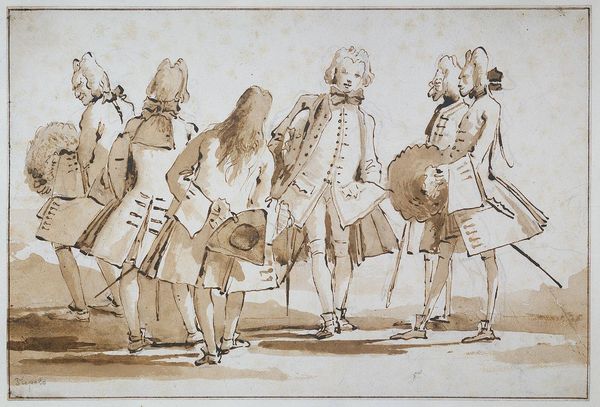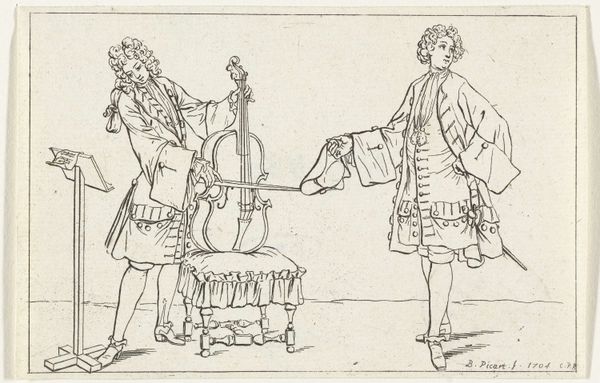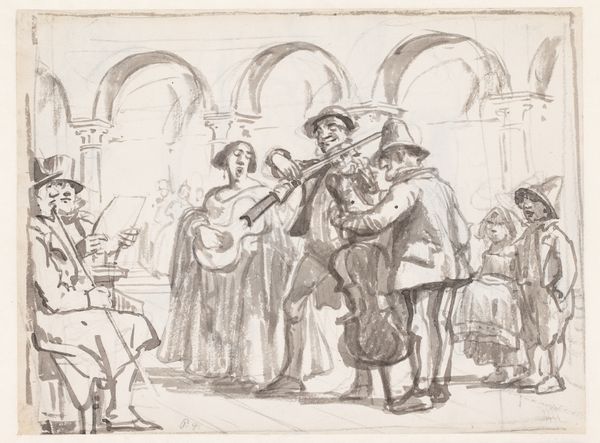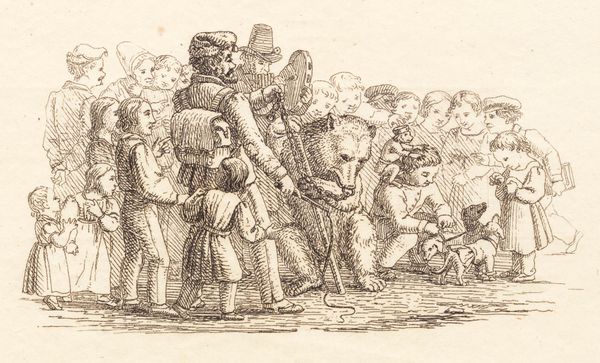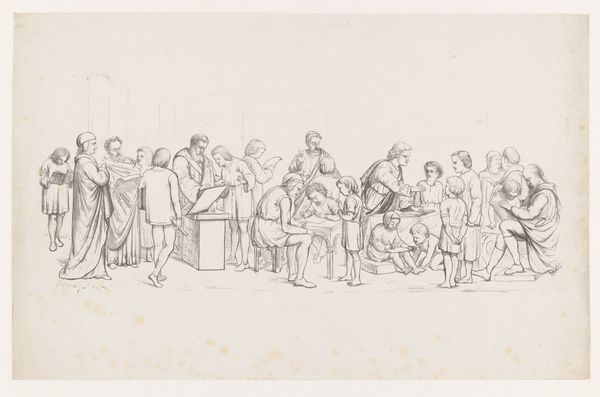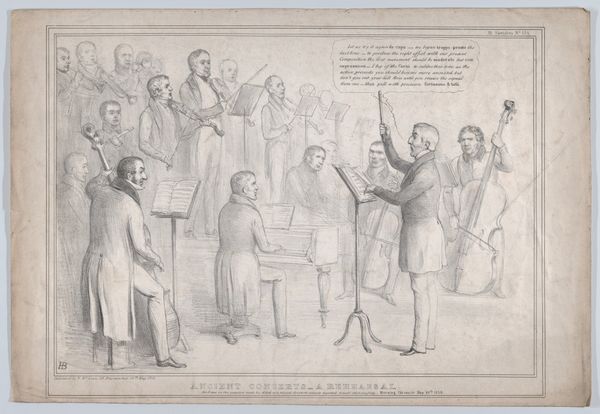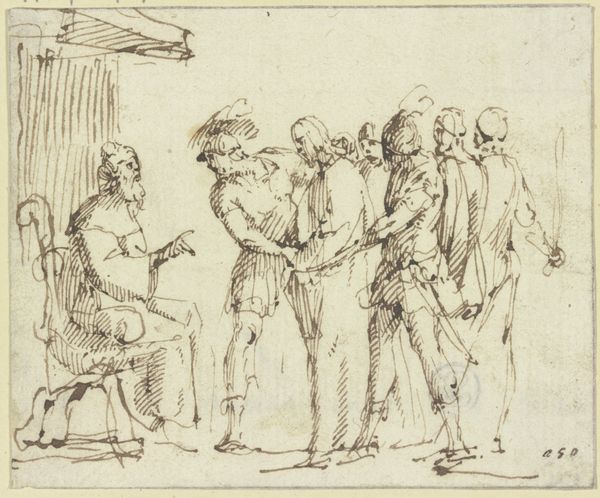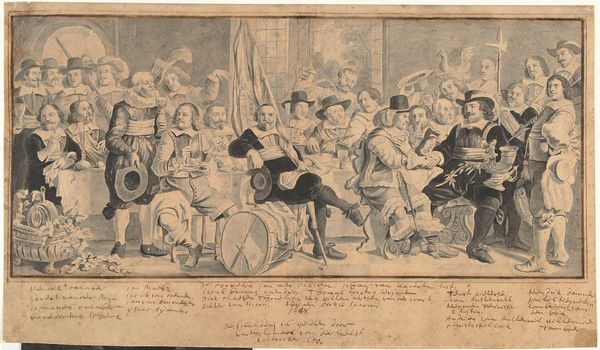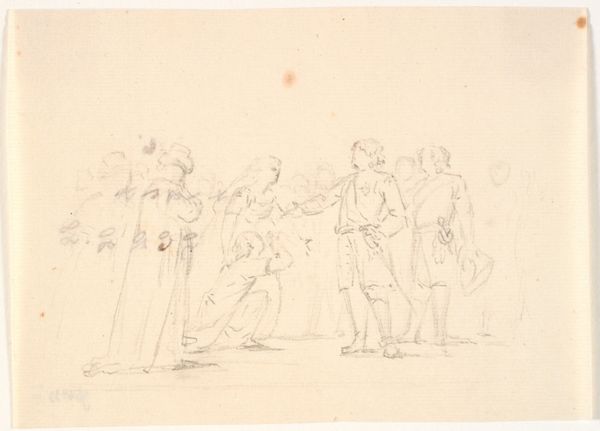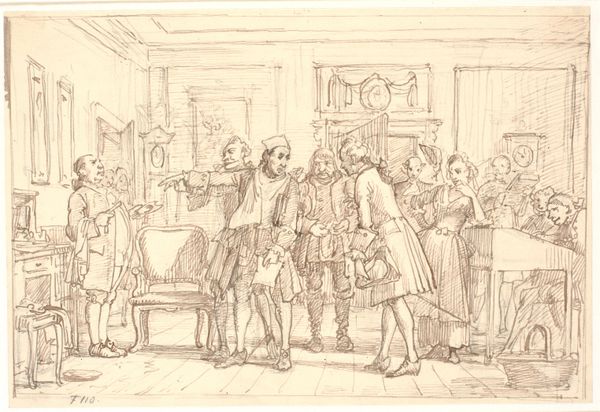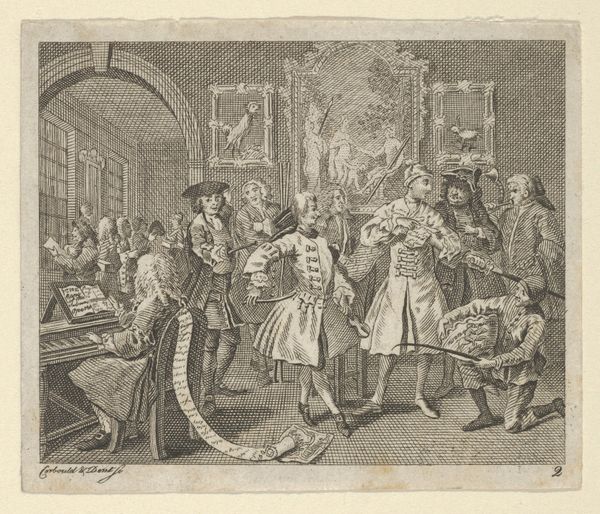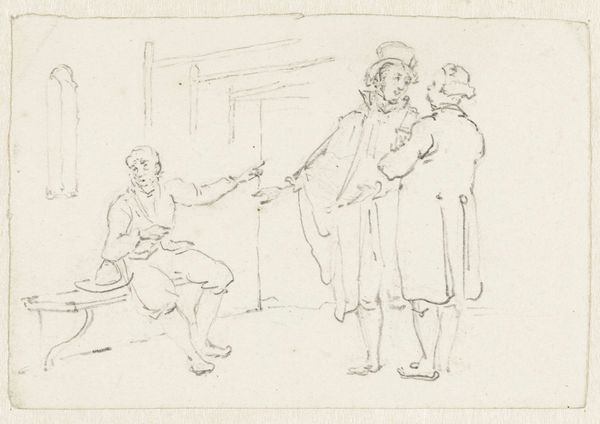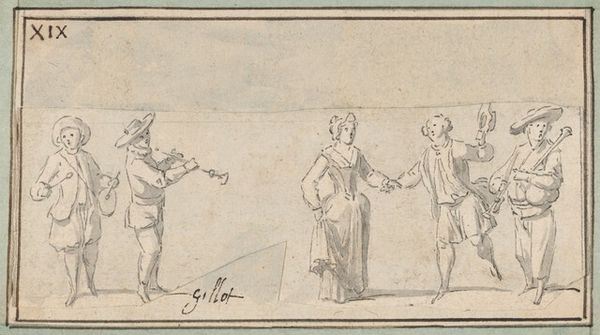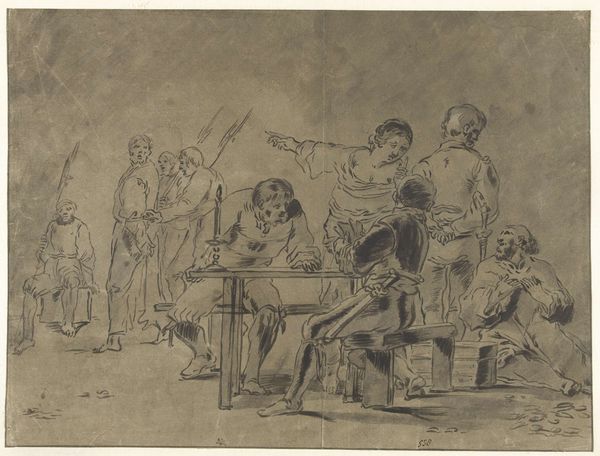
drawing, paper, ink
#
portrait
#
drawing
#
neoclacissism
#
paper
#
ink
#
group-portraits
#
genre-painting
Dimensions: height 178 mm, width 264 mm
Copyright: Rijks Museum: Open Domain
Curator: Look at this vibrant social scene rendered in ink and paper. This is "Concert at the French Consul's Residence in Brindisi" by Louis Ducros, created in 1778, a fascinating peek into the leisurely lives of the Neoclassical period, held right here at the Rijksmuseum. Editor: You know, the immediate thing that jumps out is this understated elegance. A grayscale palette, loose brushwork, a real sense of being 'in the moment', less a formal portrait, more an observational anecdote. It feels remarkably unstilted for a formal concert! Curator: Exactly! Ducros captures a certain cultural resonance here. Music held symbolic significance – it was viewed as a way of cultivating harmony and order, reflecting Enlightenment ideals and the aspiration for an idyllic civilized life, perhaps more hoped for than experienced, judging by those rather restless figures toward the back there. Editor: Oh, the restless ones! Those ghostly background figures seem to echo the more solid figures, they also suggest sound, in that ghostly haze, perhaps also social tensions held in check by social niceties. And this instrument--a lute, or perhaps a mandolin? Adding to that sense of ordered chaos I detect here. Curator: You're spot on, instruments themselves can have cultural memory and meaning! Lutes often evoke associations with romance, poetry, the idealized past... though within the specific context of the Enlightenment, their music was becoming accessible beyond the aristocracy and into the middle classes, a signifier of wealth and cultured sophistication and wider participation in cultural life. Editor: It strikes me, too, that this concert is taking place at a consul's home in Brindisi - an intriguing location, isn’t it? A sort of crossroads, literally a port city for trade and diplomacy. I imagine cultural exchange was very vibrant there at the time and perhaps a Neoclassical expression of 'Europeanness' taking place far from its original borders, as those lines get blurry at the edges. Curator: Well observed! The Neoclassical style often drew its influences from classical antiquity, suggesting cultural aspirations linked back to Rome and Athens in an effort to establish a kind of continuity between their own era and an earlier period. Editor: I love how this simple drawing manages to hold all that complexity... Ducros really invites you into the scene. What begins as a sketch somehow echoes history and resonates with cultural nuances across time. Curator: It's wonderful how, even through the relatively simple composition, it still provides us with a portal into the eighteenth century! It reminds us how spaces have multiple lives.
Comments
No comments
Be the first to comment and join the conversation on the ultimate creative platform.
